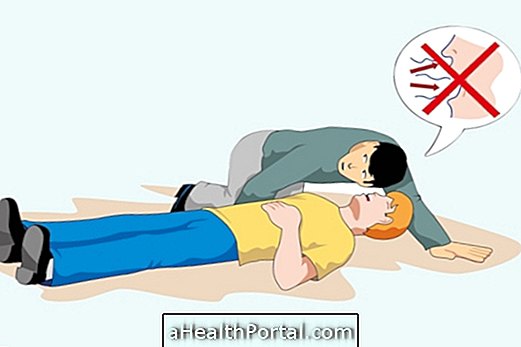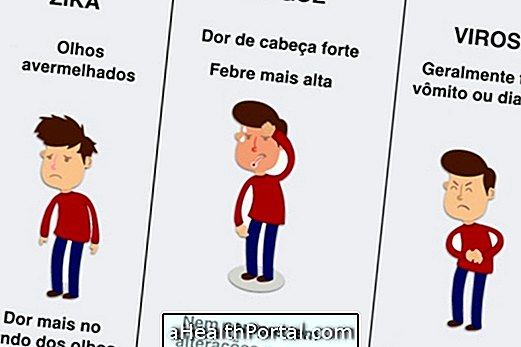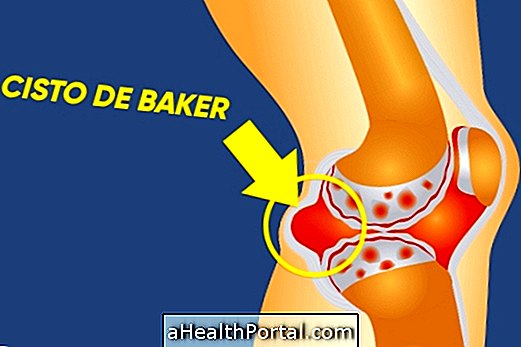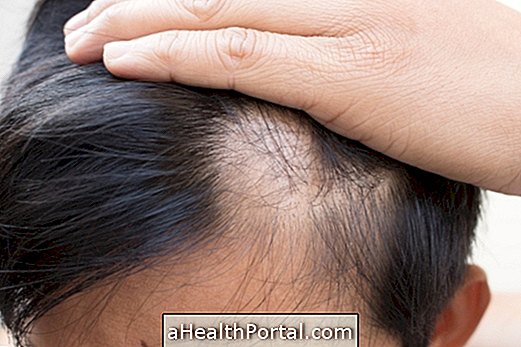Symptoms of a jellyfish burn are severe pain and a burning sensation in the area, as well as intense redness in the skin where they have been in contact with the tentacles. If this pain is very severe, you should go to the nearest emergency room.
However, not all cases require medical assistance. Most people who suffer from this type of burns, if treated correctly, may not even need to go to the hospital.

1. Remove the tentacles
The best way to remove tentacles from the living water that may have stuck to the skin is to use tweezers or a popsicle stick, for example.
However, since these tentacles can be very sticky, to facilitate the task it is advisable to put sea water over the region while removing the tentacles, as fresh water can stimulate the release of more poison.
2. Apply white vinegar
After removing the tentacles, an excellent strategy to relieve pain and neutralize some of the poison is to apply white cooking vinegar directly to the affected area for 30 seconds. Vinegar contains a substance, known as acetic acid, that neutralizes the poison in living water.
Under no circumstances should urine or alcohol be applied to the region as they may aggravate irritation.
3. Put the place in hot water
According to several studies, placing the affected region in hot water for about 20 minutes helps to relieve pain and inflammation. Another option, if it is not possible to immerse the affected area, is to take a bath of warm water, letting the water fall for a few minutes on the burn.
This step should only be done after removing the tentacles, to prevent fresh water from causing more poison to be released.
4. Apply cold water compresses
After adopting the previous measures, if the pain and discomfort remain, cold water compresses can be applied to the burned area.
Pain and discomfort usually improve after 20 minutes, however, it may take up to 1 day for the pain to disappear completely. During this period, it is recommended to take painkillers or anti-inflammatories, such as Paracetamol and Ibuprofen.
When to go to the hospital
If the pain lasts more than 1 day or if other symptoms appear, such as vomiting, nausea, muscle cramps, difficulty breathing or a feeling of a ball in the throat, it is recommended to go immediately to the hospital to assess the need for treatment with an antidote or antibiotics for example.
How to take care of the burn
The most important thing in the days after the burning of the living water is to apply cold compresses to the area to relieve pain and inflammation, however, if small sores appear on the skin, you should also wash the area 2 to 3 times a day with water and neutral pH soap, covering with a bandage or sterile compresses. See also home remedies that can help treat the burn.
In case the wounds take time to heal, it may be necessary to consult a general practitioner or dermatologist to start using an antibiotic ointment, such as Nebacetin, Esperson or Dermazine, for example.
Was this information helpful?
Yes No
Your opinion is important! Write here how we can improve our text:
Any questions? Click here to be answered.
Email in which you want to receive a reply:
Check the confirmation email we sent you.
Your name:
Reason for visit:
--- Choose your reason --- DiseaseLive betterHelp another personGain knowledge
Are you a health professional?
NoMedicalPharmaceuticalsNurseNutritionistBiomedicalPhysiotherapistBeauticianOther
Bibliography
- VERYWELL HEALTH. How to Treat a Jellyfish Sting. Available in: . Accessed on 11 Mar 2019
- WEBMD. Jellyfish Sting Treatment. Available in: . Accessed on 11 Mar 2019
- MAYO CLINIC. Jellyfish stings. Available in: . Accessed on 11 Mar 2019
- IRISH EXAMINER. Vinegar and hot water treat common jellyfish sting. 2017. Available at:. Accessed on 11 Mar 2019












-o-que--sintomas-e-tratamento.jpg)









